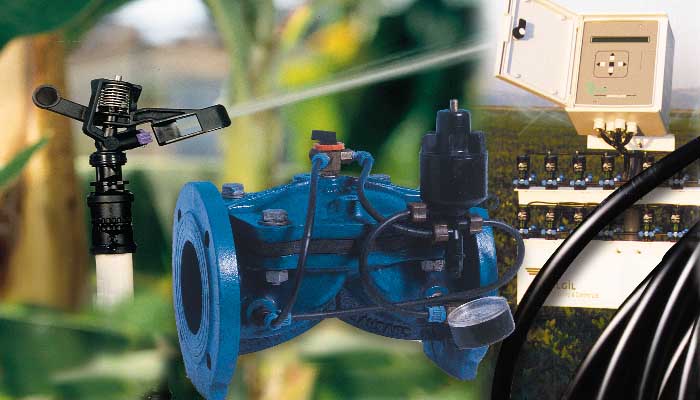

![]()

In the summer months, most water used in residential areas is applied to landscapes. By learning how much water to apply to your landscape and when to apply it, you simultaneously support four landscape irrigation goals: reducing costs, conserving water, reducing non-point pollution (contamination from a broad geographical area such as fertilizer, run off from urban landscapes), and maintaining an attractive landscape.
Does your irrigation system apply water uniformly? Uniformity means every plant or soil surface receives the same amount of water. For example, one area should not receive 1/2" of water while another area receives 1 1/2". Non-uniform irrigation application results in over-watering one area to assure another won't dry out.
Irrigation uniformity is achieved through proper spacing and placement of sprinkler heads. By spacing sprinkler heads closer together than design specifications require, you can reduce water use and enhanced plant quality.
Another factor to adjust in your irrigation system is water pressure. Proper pressure helps minimize wind effects. Excessive water pressure creates small particles of water which are easily moved away from the planned application pattern by wind. Distorted patterns mean some landscape area will require additional watering, even after sufficient water has gone through your system.
By watering just after sunrise when wind is minimal, you can reduce the effect of wind. However, your system should be designed for the highest wind speeds expected during the growing season.
Efficient irrigation systems also include a way to reduce runoff. It is important to understand your soil's characteristics. Much of Nebraska has "heavy soils." That is, they include a high percentage of silt and clay particles. These types of soils often have infiltration rates of less than 1/2" per hour. You should adjust your system accordingly: usually not more than 1/2" per hour. If your landscape needs more water, add another 1/2" the next day.
Annual maintenance is an important part of any irrigation system. You can do this with the help of a do-it-yourself manual, or you can arrange for the installation company to do regular checkups. Irrigation systems, like any other equipment, eventually wear out and must be replaced.
The final factor in efficient irrigation is one that is most often forgotten: your landscape may have changed since installation. Increased size of plant material may now block or distort the spray pattern. You may have to modify either the plants or the irrigation system.
If you use a hose and portable sprinklers rather than an underground system, you still must aim toward distribution that is uniform and appropriate to your soil's infiltration rate.
Source: University of Nebraska, Roch Gaussoin, Extension Turfgrass Specialist